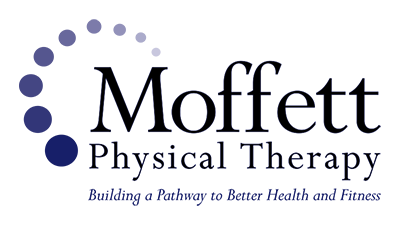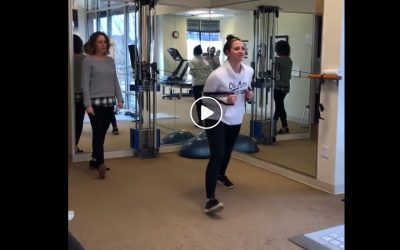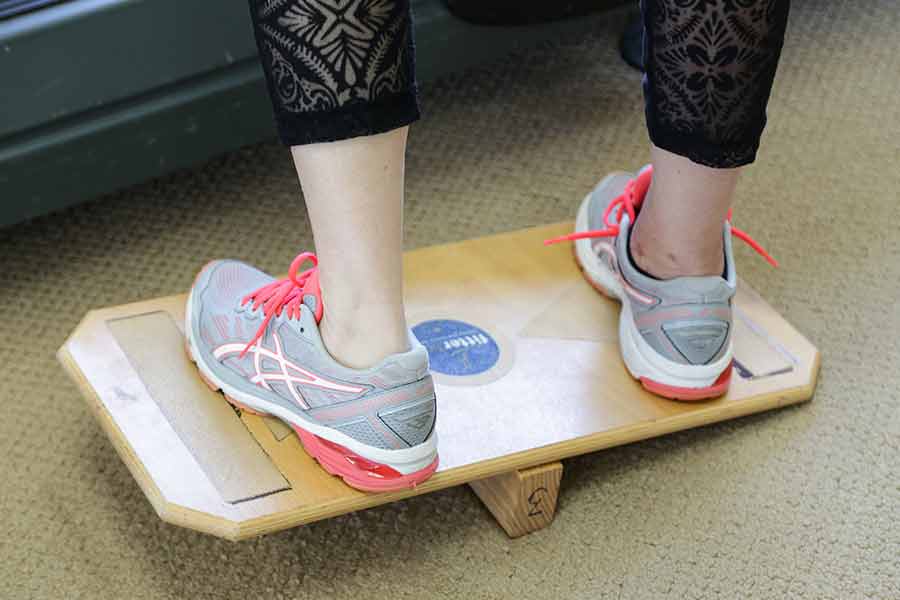
Knee / Ankle Rehabilitation
Chondromalacia
Chondromalacia patellae is a pathology that effects the kneecap (patella). It is a softening and degeneration of the cartilage under the patella. This condition may also be referred to as patellofemoral syndrome. A variety of reasons could cause the cartilage to wear down including poor patellar tracking, muscular imbalance, and over use. Typically, pain occurs behind the kneecap, especially with knee bending and stressful activities such as squatting and ascending and descending stairs. Physical therapy can assist with normalizing muscular balance, decreasing pain, and return to function.
Knee Joint Replacement
Knee joint replacement is the most common joint replacement surgery at this time. It is performed to replace the end of the tibia and femur which make up the knee joint. Depending on the individual, part of the patella may also be replaced. Currently an apparatus implanted, should be durable for a minimum of 15 years. This procedure is performed to decrease/eliminate pain and allow return to activities such as golfing, biking and swimming. Physical therapy is mandatory after a knee replacement in order to gain range of motion, strength, balance, proprioception. Gait training is important in assisting an individual’s return to a previous level of function and resumption of daily living activities.
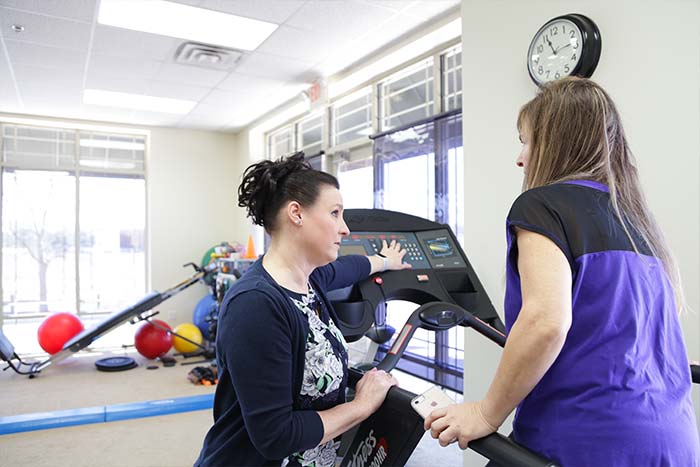
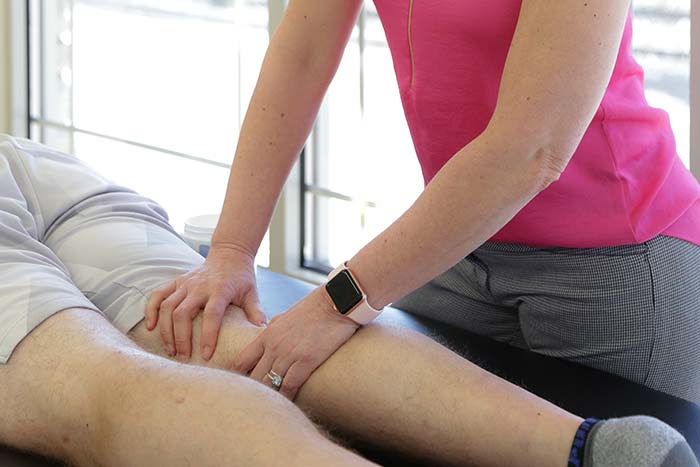
Meniscus Tear / Repair
There are two types of cartilage found in the knee. The menisci are strong wedges of cartilage found between the knee joint. There is also articular cartilage, which lines the bones at the knee joint. When a meniscus tear occurs, most commonly it is due to a trauma such as an athletic injury or with degeneration as a result of the aging process. Pain, swelling at the knee joint, popping/clicking, loss of range of motion along with knee (locking) are common signs of a meniscus tear. A meniscus repair is a surgical procedure which repairs the cartilage. A meniscectomy is a procedure to remove the torn piece of cartilage. Physical therapy will enhance the speed of recovery after these procedures. The focus of treatment will be to regain range of motion, patellar mobility, strength, flexibility, proprioception, while returning to previous level of function.
Patellar Tendonitis
Patellar tendonitis occurs when the tendon which connects the kneecap (patella) to the shinbone (tibia) becomes irritated and inflamed. This injury is also known as ‘jumper’s knee’ because it is commonly found in athletes, but it can occur from a trauma directly to the tendon. Pain typically occurs directly over the tendon, and swelling in this region may also be present. Physical therapy can provide an individual with a personalized treatment program to address his or her knee pain. Common treatments include stretching, strengthening exercises, soft tissue mobilization, ice, and progression to functional/sport specific activities.
Patellofemoral Syndrome
Patellofemoral syndrome is a common knee diagnosis, especially for active individuals. Theories vary on how this pathology forms. Typically pain occurs behind the kneecap, especially with knee bending and stressful activities such as squatting and ascending and descending stairs. Physical therapy can assist with normalizing muscular balance, decreasing pain, and return to function.
Knee Sprain / Strain
Knee injuries are very common. Knee sprains occur when the ligaments of the knee are over stretched. Depending on the severity of the sprain, a tear of the ligament may also be present. A knee strain occurs when the muscles around the knee are over stretched. When a knee sprain or strain occurs, pain, swelling, and muscular weakness are very common. Physical therapy can assist with the reduction of these impairments and facilitate a faster return to normal function.
Bunionectomy
Bunions are a malformation of the big toe that occurs over time. The most common cause is due to poorly fitting shoes, but arthritis and genetics play a roll in bunion formation. Bunionectomy is a surgical technique, which is utilized to realign the big toe and remove excess bone and soft tissue, which makes up the bunion. Physical therapy after this surgery assists with improving mobility, reducing pain and swelling, providing scar mobilization, balance and proprioceptive training. Home exercises are also provided to assist with speeding recovery time.
Plantar Fasciitis
Plantar fasciitis is a painful condition of the foot which causes heel pain. Typically the pain is most severe with the first few steps in the morning or after sitting for a long duration. There are a few factors that contribute to this condition including: overuse, poor footwear, poor flexibility of the calf, obesity, high or low arches, or if the individual walks or stands on hard surfaces, such as concrete, for long durations. Physical therapy addresses these factors by providing strengthening and flexibility exercises, balance and proprioceptive activities, soft tissue mobilization/massage, modalities, foot wear education, splinting if necessary, gait training, and individualized home exercise programs.
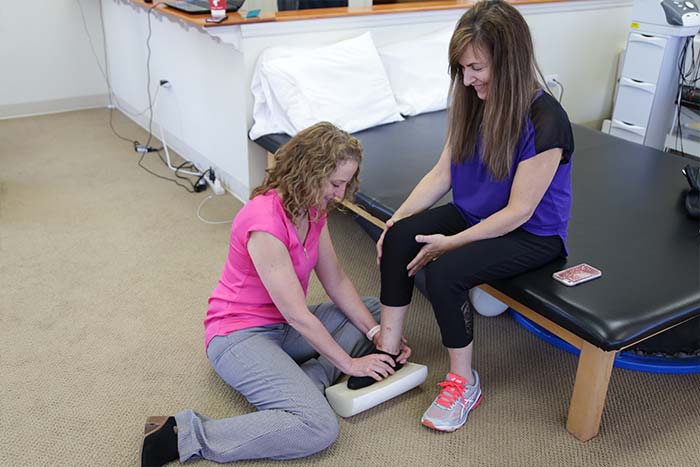
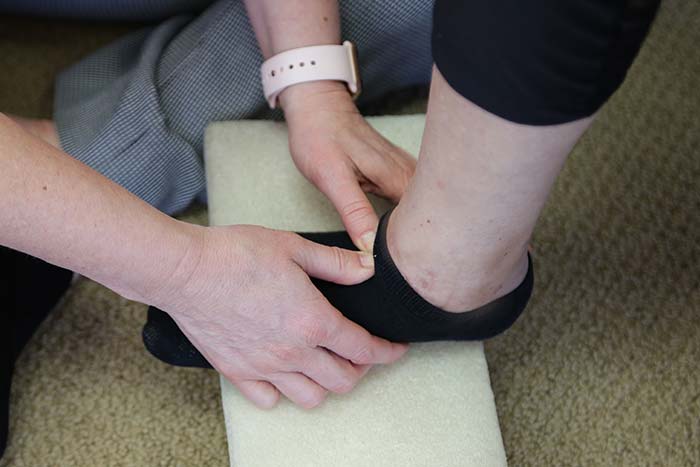
Post-Operative
Ankle and foot surgeries result in a loss of ankle and foot motion, balance, proprioception, and strength. These factors result in changes in the ability to walk and function in the community. There is also an association of increased risk of falls. Physical therapy can address these issues with treatment and custom home exercises.
Ankle Sprains
Sprains of the ankle can occur after trauma, such as rolling out on the foot. When sprains occur, swelling, stiffness, and pain result in a loss of mobility and function making it difficult to walk. Depending on the severity of the sprain, treatment options may vary. Severe sprains of the ligaments may partially or fully tear, which may require surgery and immobilization. Physical therapy works to assist in the reduction of pain and improve motion safely in order for an individual to return to his or her daily activities without dysfunction. Treatment options can vary depending on and individual’s condition, along with comprehensive physical therapy examination findings. Skilled treatments may consist of range of motion exercises, stretching, strengthening and stabilization exercises, manual therapy, modalities, orthotic fabrication (shoe inserts), footwear assessment, gait training, balance, and proprioceptive exercises. Patients are also provided with an individualized home exercise program.
Related Blog Posts
Journey of an ACL Rehab
https://www.facebook.com/MoffettPT/videos/1086529334818394/
Contact us today to get started.
Hours
Monday - Thursday 7:00 am - 8:00 pm
Friday 7:00 am - 3:00 pm
Closed Saturday and Sunday
(847) 659-1000
